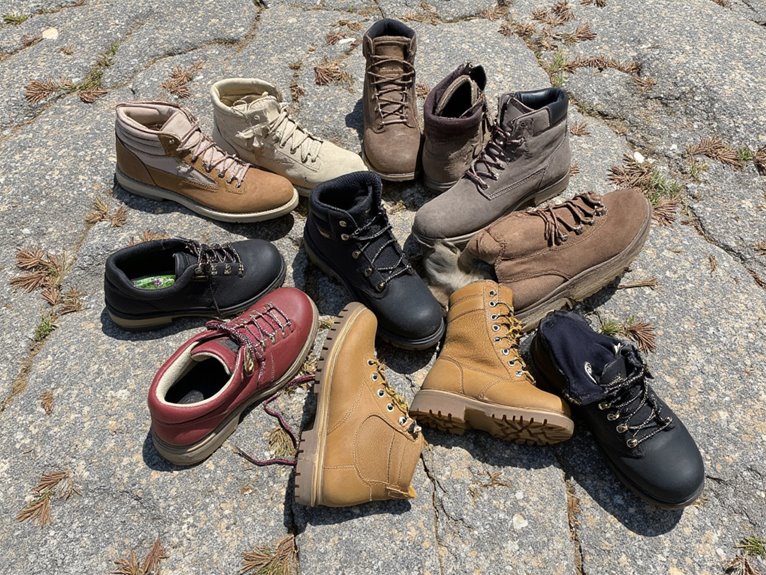Why Am I so Slow on My Bike?
It's not just about pedaling harder – a multitude of factors could be slowing you down on two wheels. A bike that doesn't fit properly, inefficient pedaling techniques, underlying health and fitness issues, poor cycling posture, and neglected bike maintenance can all hinder your speed. And let's not forget mental and physical conditioning, which can make or break your cycling performance. The good news? Identifying and addressing these areas can help you shift gears and leave sluggishness behind. Explore further and you'll discover the secrets to tapping your full cycling potential – and getting back up to speed in no time.
We are supported by our audience. When you purchase through links on our site, we may earn an affiliate commission, at no extra cost for you. Learn more. Last update on 21st December 2025 / Images from Amazon Product Advertising API.
Bike Fit and Sizing Issues
A bike that doesn't fit properly can be a major drag on your speed, much like trying to run a marathon in shoes that are two sizes too small.
When your bike is too big or too small, it can put you in an inefficient riding position, wasting energy and slowing you down.
A bike that's too small can cause you to hunch over the handlebars, while one that's too large can leave you stretching to reach the pedals.
A proper bike fit guarantees your body is in a comfortable, aerodynamic position, allowing you to generate maximum power with each pedal stroke.
Inefficient Pedaling Techniques
Proper bike fit is just the beginning, as even with a well-fitting bike, inefficient pedaling techniques can still hold you back from reaching your full speed potential.
If you're mashing down on the pedals with a stomping motion, you're wasting energy and slowing yourself down.
In the same way, if you're not using the correct leg muscles, you're not generating the power you could be.
Focus on a smooth, circular pedaling motion, using your leg muscles to push and pull the pedals.
Avoid pushing only with your quads, and instead, engage your hamstrings and glutes to generate more power.
Underlying Health and Fitness
Low cardiovascular fitness, poor muscle strength, and inadequate flexibility can secretly sabotage your cycling performance, making it difficult to maintain a decent pace.
It's time to face the music: if you're not taking care of your overall health and fitness, you're unlikely to be a cycling rockstar.
Cardiovascular endurance: Regular aerobic exercise can help increase your endurance and reduce fatigue.
Muscular strength: Building strength in your legs, core, and upper body can help you power through tough rides.
Flexibility and mobility: Regular stretching can help improve your range of motion and reduce your risk of injury.
Body composition: Maintaining a healthy weight and body composition can help improve your power-to-weight ratio and overall cycling performance.
Cycling Posture and Biomechanics
As we shift gears to venture into the domain of cycling posture and biomechanics, it's essential to recognize that even slight misalignments can profoundly impact your pedaling efficiency.
A well-tuned riding position can make all the difference in your overall speed and endurance, and it all starts with ideal spine alignment.
Optimal Spine Alignment Matters
One key performance limiter for cyclists is a misaligned spine, which can hinder power, endurance, and overall efficiency on the bike. A misaligned spine can lead to poor posture, reduced lung capacity, and inefficient energy expenditure.
Fortunately, optimal spine alignment is achievable with practice and awareness.
Relax your shoulders: Avoid tensing up and scrunching your shoulders towards your ears.
Engage your core: Activate your core muscles to support your lower back and maintain a neutral spine.
Keep your weight centered: Distribute your weight evenly between the saddle and handlebars to avoid putting unnecessary pressure on your spine.
Look up and ahead: Maintain a slight upward gaze to keep your neck and spine in alignment.
Efficient Pedaling Technique
Regularly, cyclists overlook the significance of efficient pedaling technique, which can greatly impact their overall performance, leaving them wondering why they're not riding as efficiently as they could be.
A well-executed pedal stroke can make all the difference in speed and endurance. It's not just about mashing the pedals; it's about using your legs, glutes, and core in harmony.
Focus on a circular motion, pushing down and pulling up with equal force. Avoid mashing down on the pedals, as this can lead to fatigue and wasted energy.
Instead, use your ankles to generate power, keeping your knees slightly bent to absorb the pedal stroke.
Bike Maintenance and Upgrades
Your bike, much like a temperamental partner, requires attention and TLC to perform at its best, and neglecting its maintenance can leave you lagging behind the pack.
A well-maintained bike is essential for peak performance, and a few tweaks can make a significant difference.
Tire pressure: Properly inflated tires can reduce rolling resistance and increase speed.
Chain maintenance: A clean and lubricated chain can reduce friction and improve efficiency.
Brake adjustment: Well-adjusted brakes can improve stopping power and reduce energy waste.
Component upgrades: Consider upgrading to lighter wheels, aerodynamic handlebars, or a more efficient drivetrain to boost your speed and achieve maximum performance.
Mental and Physical Conditioning
As you pedal, your body and mind are hardwired to respond to the physical and mental demands of cycling, but it's essential to tap into this potential by optimizing your mental and physical conditioning to leave your sluggish self in the dust.
A well-conditioned cyclist can maintain a consistent pace, conquer challenging terrain, and recover quickly.
On the other hand, poor conditioning can lead to fatigue, decreased endurance, and a perpetual feeling of being stuck in the slow lane.
By focusing on cardiovascular exercises, strength training, and mental preparation, you can overcome your sluggishness and tap into your full cycling potential.





